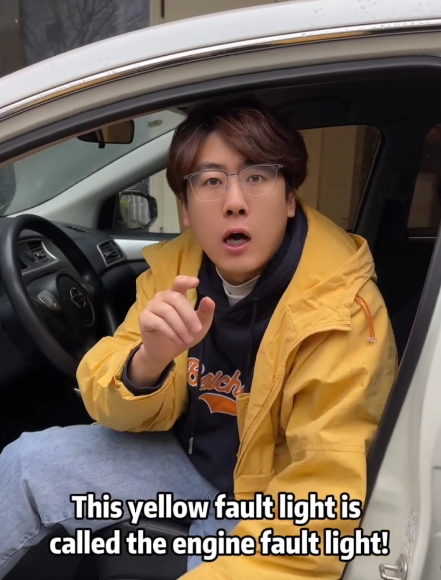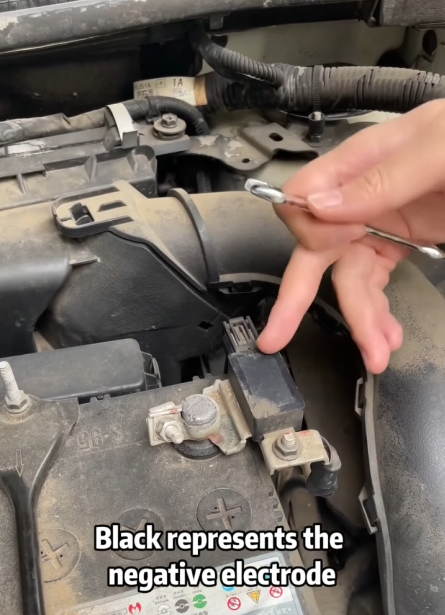
When the dreaded check engine light—or as many drivers call it, the “trouble light”—illuminates on your dashboard, it often feels like a moment of crisis. Heartbeats quicken, thoughts race toward hefty repair bills, and panic can set in. For many car owners, this tiny orange or red light seems like a harbinger of doom and expensive fixes. But here’s the shocking truth: it often doesn’t even cost $1 to fix it.
Yes, you read that correctly. Not every warning light means your car is about to collapse. In fact, many causes are simple, fixable issues that don’t require a mechanic or a dime from your wallet. So, let’s dive into what that trouble light really means and how you can handle it smartly—without breaking the bank.
What Is the Trouble Light, Anyway?
The trouble light, usually labeled “Check Engine,” is part of your car’s onboard diagnostics system (OBD-II). It monitors performance and emissions systems. When something isn’t working correctly, the system triggers the light to alert you that attention is needed.
But not all alerts are created equal. Some are urgent—like low oil pressure or overheating—while others are simply a nudge saying, “Hey, something’s off, but it’s not a crisis.”
Common Reasons Your Trouble Light Comes On (and Cost Almost Nothing to Fix!)
1. Loose or Faulty Gas Cap
Believe it or not, this is the #1 reason for a check engine light. Your gas cap plays a big role in maintaining the pressure in your car’s fuel system. If it’s loose, cracked, or not sealing properly, your car senses a leak in the vapor system—and boom, the light comes on.
Fix: Open the gas cap, inspect the seal, and tighten it until you hear a click. If it’s damaged, a replacement cap often costs less than $10—and many auto parts stores let you borrow one to test. In many cases, the light will reset itself after a few drives.
Cost: $0 (just a twist of your hand!)

2. Low Battery Voltage
Your battery powers many systems, and a dip in voltage can trigger a fault code. For instance, if your battery was disconnected or dying, the system may misinterpret that as a fault.
Fix: Drive your car normally, and let the battery recharge. If the battery is new or just drained slightly, the system may reset itself. If you have a code scanner, you can manually clear the code.
Cost: $0 if the battery is okay.
3. Dirty or Wet Sensors
Sensors like the mass airflow sensor (MAF) or oxygen sensor help manage your engine’s efficiency. If they get dirty or have loose connections due to water (especially after heavy rain or a car wash), your light might blink on.
Fix: Open the hood and check for moisture or grime. Carefully dry and clean the area if needed. Many times, simply disconnecting and reconnecting the sensor plug can do the trick.
Cost: $0 if you clean it yourself using a rag and some patience.
4. Temporary Glitches or Software Hiccups
Cars today are like computers on wheels. Just like your phone or laptop, a car’s computer system can experience a momentary glitch. A sensor might send a faulty signal once, and that’s enough to trigger the light.
Fix: Wait and see. If the light is not blinking and your car drives normally, it might clear itself after a few ignition cycles (on and off).
Cost: $0—just a little patience.
5. Overdue Oil Change or Maintenance Reminder
Some cars are programmed to turn on the check engine light when routine maintenance is overdue. It’s a gentle nudge, not a panic alert.
Fix: If you’ve recently had maintenance done but the light remains, you can reset it yourself (consult your owner’s manual or YouTube your car model).
Cost: $0 if you reset it manually.

The DIY Trick: Use a Free Code Scanner
Many auto parts stores (like AutoZone, O’Reilly, or NAPA) offer free code scanning. Just drive in, ask an employee, and they’ll plug a handheld scanner into your car’s OBD-II port. Within seconds, it reads the trouble codes and tells you what triggered the light.
Armed with that knowledge, you can decide: Is it something serious? Or is it one of the harmless, fix-it-yourself causes above?
Bonus Tip: You can also buy a Bluetooth OBD-II scanner for as little as $10 online. Paired with a free smartphone app, you’ll always know what your car is thinking.
When You Should Take It Seriously
While many causes are harmless, you shouldn’t ignore a blinking check engine light. That often means a misfire, which could damage your engine or catalytic converter if left untreated. If your car stumbles, smells like rotten eggs, or shakes, get help quickly.
Also, if the car shows signs of overheating, losing power, or burning smells, turn off the engine and call a pro.
Proactive Steps to Avoid the Light Altogether
- Tighten your gas cap after refueling.
- Keep up with oil changes and air filter replacements.
- Use quality fuel and avoid overfilling the tank.
- Occasionally scan for hidden trouble codes—even when no light is on.
- Wash your engine bay carefully—avoid blasting water at sensors.

Final Thoughts: Don’t Fear the Light
Cars today are designed to be smart and communicative. The check engine light isn’t there to scare you—it’s there to help. And more often than not, it’s pointing to a simple issue you can fix yourself.
The myth that “a lit trouble light = a thousand-dollar mechanic visit” needs to be debunked. In reality, many of these issues are minor and cost nothing to resolve. All it takes is a bit of knowledge, a cool head, and sometimes just a twist of a gas cap.
So next time you see that little orange icon flicker to life, take a breath. Your car is talking to you—and it might not even cost you a dollar to listen.



